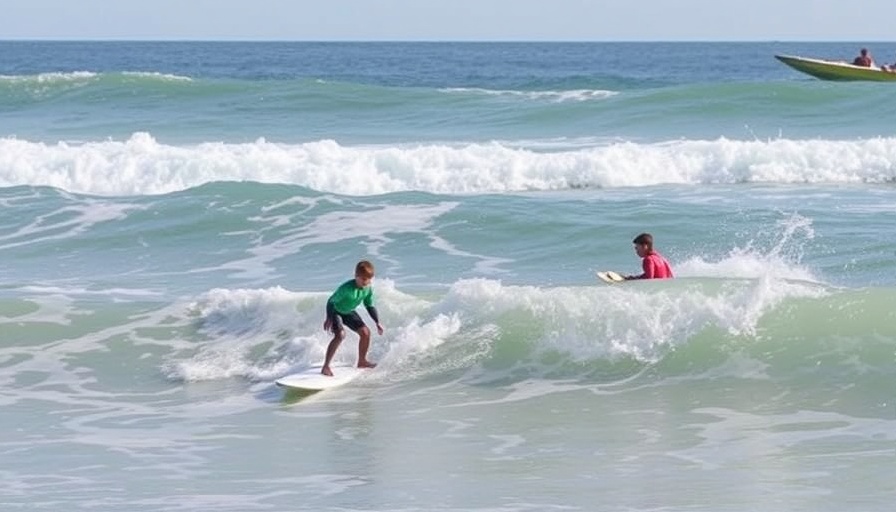
Understanding the Risks: Where to Draw the Line for Kids in Big Waves
Surfing is often seen as a thrilling adventure for anyone, regardless of age. The rush of riding powerful waves is exhilarating, yet it raises a pressing question: at what point do we draw the line for children in the surf? Balancing the excitement of big waves with the inherent dangers is not just about age, but readiness and maturity. As parents and guardians, how do we determine when it’s safe to let our children catch those massive swells?
The Age of Bold Surfing: Pushing Boundaries
Raising this question reveals just how subjective the criteria are for children surfing in heavy conditions. While some young surfers, like “Baby” Steve Roberson who surfed Maui’s Jaws at age 10, showcase extraordinary talent and courage, others may not have the same level of comfort or skill. Surfers such as António Laureano, who attracted early recognition at 15, highlight this duality—while some kids can push limits early, others blossom with time and experience. We must consider each child's individual comfort and growth, weighing their ability to handle challenges against the risks involved.
The Dangers of the Deep: Navigating Risks in Big Surf
When surfing in heavy conditions, drowning and injuries from the ocean floor remain major concerns. The ocean's unpredictability can lead to serious consequences, from being submerged for extended periods to risking head or spinal injury during wipeouts. Such outcomes can instill fear in young surfers, potentially leading to psychological barriers against the sport they love. While these risks exist, the sport also teaches valuable life skills: discipline, awareness, and respect for nature.
How to Gauge a Child’s Readiness for Big Waves
One critical aspect of allowing kids to surf huge waves is assessing their readiness. This nuance often stems from their ability to evaluate risk, which matures as kids develop, nearing full cognitive capacity around the age of 25. As such, young surfers will differ widely in their readiness based on personality traits. Some are cautious, while others embark on reckless adventures, and both styles require proper coaching. Parents can encourage their children to tackle manageable fears gradually, helping them build a strong foundation in the water.
Questions for Parents: A Safety Checklist
Before allowing children to engage in big wave surfing, parents should maintain open communication and pose essential questions such as:
- Do they understand the inherent risks in big surf?
- How do they feel about surf conditions on that day?
- Are they emotionally and physically prepared to handle potential challenges?
This dialogue helps confirm their level of awareness and readiness while fostering a sense of responsibility in the water.
Final Thoughts: The Balance Between Adventure and Safety
Ultimately, finding the right balance between allowing children to embrace the joy of surfing and ensuring their safety is no easy feat. There’s no one-size-fits-all answer, and it may fluctuate based on personality, skill, and strength. Every key player in this equation—parents, coaches, and mentors—must navigate the fine line between challenge and recklessness. As the surf culture continues to evolve, our shared experiences around ocean safety and responsibility can lead to better-informed decisions in nurturing the next generation of surfers.
 Add Row
Add Row  Add
Add 




Write A Comment